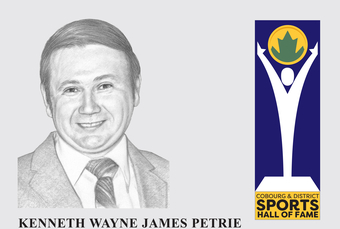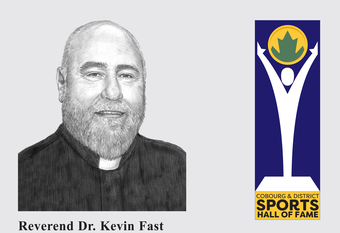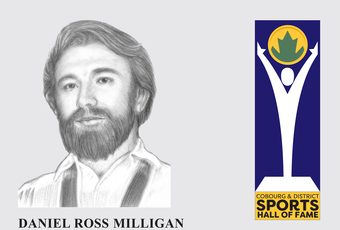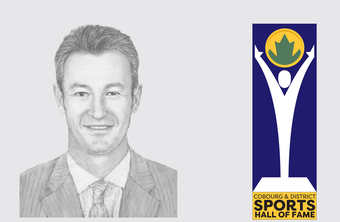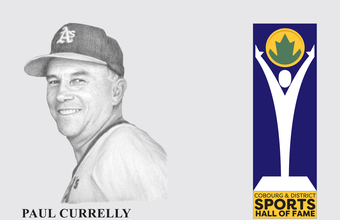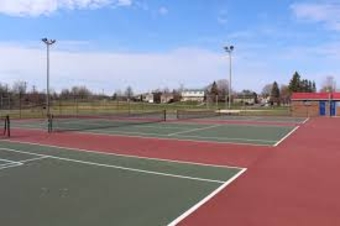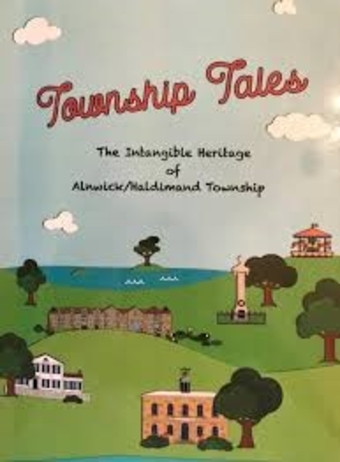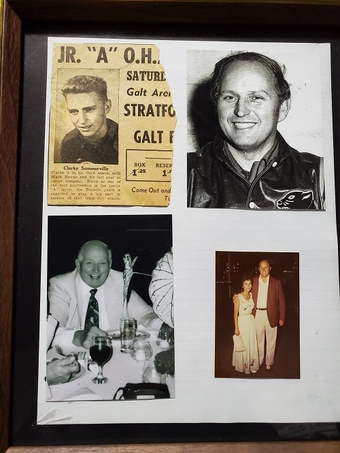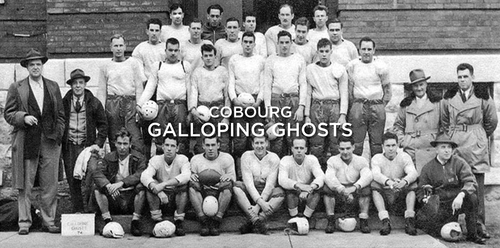Lauded for Contribution to Cobourg
By Mandy Martin and Jim denHollander
Cobourg Star August 20, 1997
Cobourg sports enthusiast, businessman, family man and all-around nice guy Clarke Sommerville will be greatly missed in the greater Northumberland community, friends and family said following his death Monday.
Born in Toronto, as a teenager, Mr. Sommerville was drafted as a goalie to play junior hockey. In the late 1940s he was playing in Galt, Ont. “I was a rink rat and I’d go to see him play in my home town” recalled Cobourg Deputy Reeve Bob Spooner. Mr. Spooner was friends with Hugh Whittington, the younger brother of Dorothy Whittington, who later became Mrs. Sommerville.
Mr. Sommerville went on to play semi-pro hockey in Philadelphia and Washington, earning the nick name “Eagle Eye”. “They called him ‘Eagle Eye’ or ‘Sieve’ depending if it was a good or bad game” Mrs. Sommerville recalled. Son Dave said Cobourgers affectionately called his father Sieve.
The travelling life of hockey had lost its appeal by 1951. In 1952 the Sommervilles came to Cobourg. They converted the former Galbraith’s radio shop (where Pizza Pizza is today) into a sports store. In 1961 Sommerville’s Sporting Goods moved to its current location on the north side of King Street West. Cobourg Daily Star sports editor Layton Dodge remembers Mr. Sommerville reviving his hockey career to play in the intermediate league.
During the first game of the 1957 playoffs against the Lakefield Lumber Kings, Cobourg was up 5-1 but Mr. Sommerville had been subjected to Lakefield battering all night. Finally, he raised his stick and caught a Lakefield player right across the forehead. “It touched off quite a riot” Mr. Dodge recalled. The Cobourg team was restrained to the bench except the five players on ice who bore the brunt of the Lakefield melee.
But despite the aftermath, the next day Mr. Sommerville telephoned the Lakefield player to apologize. Only his wife knew he had done so. As a boy, Town of Cobourg administrator Bryan Baxter recalls watching Mr. Sommerville as goalie of the intermediate team in the 1950s. “He was an outstanding goaltender. I looked up to him.” Mr. Baxter said.
Mr. Sommerville was also active in local baseball. He was instrumental in the success of the Cobourg Juvenile A 1958 provincial baseball championship team, coach Paul Currelly recalled. “He’s been a good friend ever since he came to Cobourg” he added. In 1965 Mr. Sommerville and John Rolph founded the Cobourg Cougars. Today, the Cougars are in their sixth year as a Junior A hockey team.
Gord Kelly was one of the original Cougars. He recalls the first-year team. “Let’s face it. It was tough going” he said. We had a limited budget, but with Clarke in the background he made sure we had everything we needed. He always wanted to stay in the background” he added.
Mr. Kelly also worked in the sports store and recalled people stopping by after work or during the day, “spending time at the hot stove lounge around the pop cooler.” Gus Bambridge of Cobourg was another original Cougar. He later became the coach with Mr. Sommerville managing the team. “I remember when they wanted to fire me and Bryan Rose and Clarke didn’t want them to fire us” Mr. Bambridge recalled.
Mr. Sommerville was president of the Cougars in 1971 when the team won the Ontario Hockey Association championship. In 1972 when his daughter Susan wanted to play hockey, Mr. Sommerville helped out by organizing a four-team girl’s league. He was also active in organizing minor league baseball, girls’ softball and played in the Cobourg softball league. “He believed in sports for anybody that wanted to play regardless of sex or age,” his wife said.
As a mother of four boys active in local sports, Bev Helps of Grafton agreed. “There are a lot of kids who would never have played if not for him” she said. “He never questioned your income. If you said something was beyond the budget, he’d find something that was. If you had several kids in sports, he’d work out the best price possible. I don’t think Cobourg could have survived without him.”
Mr. Dodge fondly recalled one quirky feature that betrayed the fact that Mr. Sommerville placed the playing of sports well ahead of his commercial involvement in it. “Here he (was selling) ball gloves and he used this old flat piece of leather himself” he said.
Mr. Sommerville was a natural athlete, Mr. Dodge recalled: the type of guy who goes golfing for the first time and scores well. Last year, the Clarke Sommerville baseball diamond was dedicated at the new Legion Fields softball complex in Cobourg. Harry Jeschke, who manages Legion Fields and the Cobourg arenas, recalled Mr. Sommerville as “a terrific gentleman.” “He was always there for the youngsters in the community. How do you put it into words? He was a true sportsman.”
Mr. Spooner remarked that he was “doubly glad” that Mr. Sommerville lived to see the dedication. Mr. Baxter said that in later years he was acquainted with Mr. Sommerville as a businessman on the main street. “I found him a warm, gentle person, with a soft spot in his heart for all young people” he said. “He always had a smile and a warm greeting for you which uplifted anybody’s day.
He was a well-respected individual in both the sports and business communities of Cobourg and Port Hope. In his business, he attracted many people to Town with his knowledge and expertise.” Mr. Currelly remarked on the “tremendous amount of work” Mr. Sommerville devoted to the Town’s youth. “He sponsored many clubs. He always helped everyone,” he noted. “The whole family have been pillars of strength in the sporting fraternity.”
Mr. Spooner recalled that Mr. Sommerville “could never say no to anyone. He donated trophies, prizes, dinners as well as sponsored teams. And I’m sure he did lots of things for other groups that most of us never know about.” Mayor Joan Chalovich who knew Mr. Sommerville since the 50s, recalled “a terrific father and husband. He’s left an awful void.” she said. He had a strong commitment to his family, his business, the Cobourg community and the larger Northumberland community. He was a great citizen of Cobourg.”
Mr. Sommerville is survived by his wife Dorothy, children David and wife Mary of Cobourg, Nancy and husband Kevin of Belleville and Susan and husband Bill of Illinois. Sister Mary McLean lives in Peterborough. There are eight grandchildren. There will be no funeral service. Instead the family plans a later private celebration of his life. Donations to the Cobourg Hospital Foundation are requested in lieu of flowers.
Reviewed August 2020
